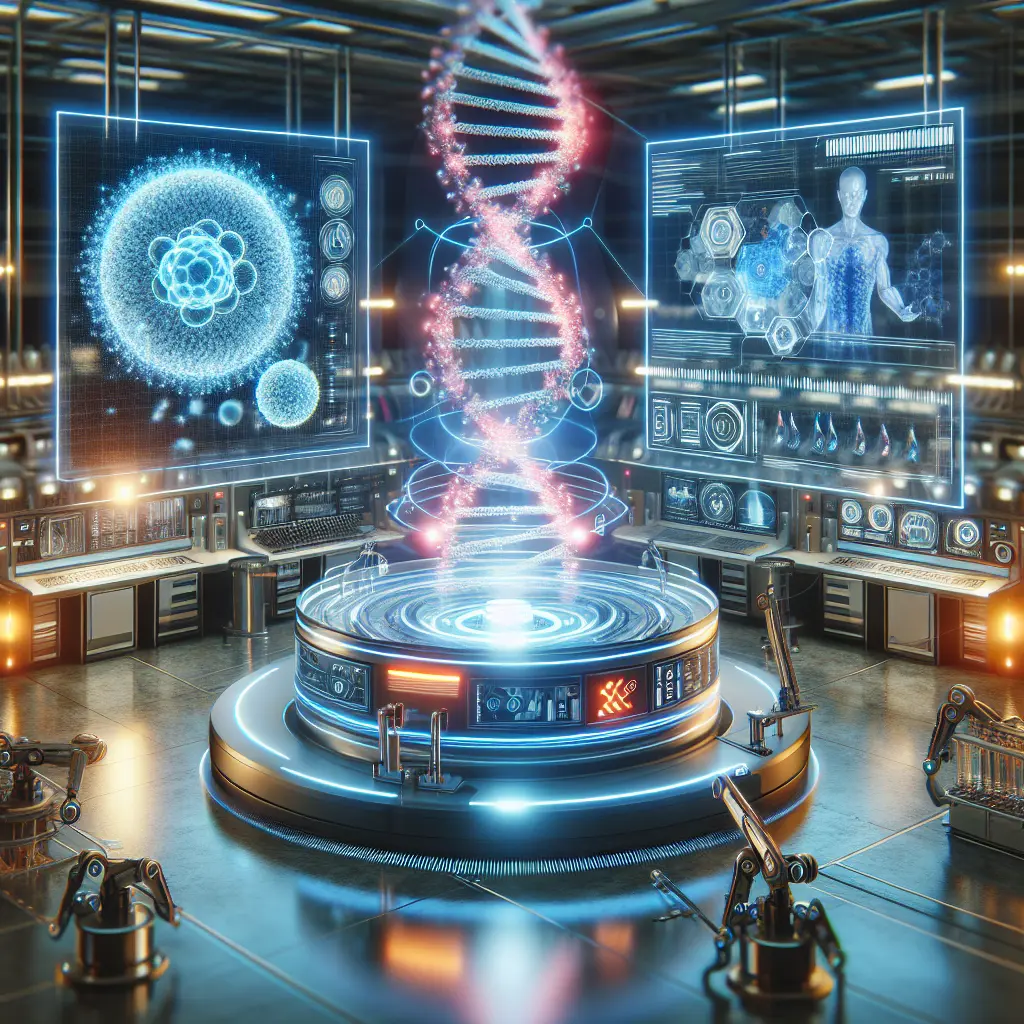
The realm of genetics has always been a frontier of immense possibilities and profound questions. Today, at the intersection of artificial intelligence (AI) and genetics, we stand on the cusp of revolutionizing medical science and beyond. AI's integration into gene editing, particularly through CRISPR technology, is not just enhancing the precision and efficiency of genetic modifications but is also paving the way for groundbreaking treatments and sustainable agricultural practices.
The Convergence of AI and CRISPR in Gene Editing
The fusion of AI and CRISPR-Cas9 technology exemplifies one of the most thrilling advancements in biotechnology. CRISPR, a tool that allows scientists to edit genes with unprecedented precision, has been a game-changer in genetic engineering. However, the role of AI in this domain, specifically through machine learning in genomics, has magnified its potential exponentially. AI-driven genetic research is enabling scientists to predict the outcomes of gene edits more accurately, thereby reducing potential off-target effects and enhancing the safety profiles of gene therapies.
Recent Advances and Applications
Curing Genetic Blood Disorders: Recently, the first gene-editing therapy aimed at curing a genetic blood disorder has shown promise. This treatment uses CRISPR technology to precisely edit the genes responsible for disorders like sickle cell disease and beta-thalassemia. The procedure, which is now being offered to British patients as part of a clinical trial, represents a monumental step in precision gene editing (source).
Prime Editing for Cystic Fibrosis: Prime editing, an advanced form of CRISPR, has been used to correct the mutation causing cystic fibrosis in human lung cells. This method offers a more targeted approach to gene editing, minimizing unintended alterations and potential complications (source).
Restoring Hearing through Genome Editing: In a novel approach, researchers have successfully restored hearing in adult preclinical models with genetic deafness using targeted genome editing. This not only underscores the versatility of gene-editing techniques but also opens new avenues for treating sensory deficits (source).
Enhancing Quality Control in Gene Therapy: The development of novel nanosensing techniques for the quality control of viral vectors used in gene therapy is another area where AI and bioinformatics are making significant contributions. These technologies ensure that therapeutic vectors are safe and effective before they are used in treatments (source).
Agricultural Applications: Beyond human medicine, AI-enhanced gene therapy is being explored for agricultural use. Scientists have discovered genes in rainforest plants that could potentially save crops like cacao from diseases or environmental stresses. By editing these genes, we might be able to produce drought-tolerant or disease-resistant crops, ensuring food security in the face of climate change (source).
Gut Microbiome Engineering: In an innovative mouse study, researchers have unlocked the potential for genome editing directly in the gut microbiome. This breakthrough could lead to new treatments for digestive disorders or metabolic diseases by altering the bacterial composition in the gut (source).
Nanoparticle-mediated Gene Therapy: The use of nanoparticles to deliver gene therapy for diseases like sickle cell disease showcases another facet of AI in genomic medicine. This method enhances the delivery and efficacy of gene edits at targeted sites within the body (source).
Reversing Heart Disease in Mice: A new gene editing technique has been developed that can reverse heart disease in mice models. This technique could potentially be applied to human patients in the future, offering hope for millions suffering from cardiovascular diseases (source).
The Role of Computational Genetics and Bioinformatics
The integration of computational genetics and bioinformatics with AI is crucial for understanding complex genetic data quickly and accurately. AI tools for gene editing analyze vast datasets to identify genetic targets for therapy or enhancement with greater speed than ever before. This capability is vital for personalizing treatments in genomic medicine, where individual genetic profiles dictate therapeutic approaches.
Ethical Considerations and Future Directions
As we advance, the ethical implications of AI in genetic engineering remain a topic of intense debate. Ensuring responsible use while navigating the moral landscapes will be as crucial as the scientific challenges themselves.
Conclusion
The synergy between AI and CRISPR technology in advancing gene editing is undeniably transforming both therapeutics and our understanding of biology. As we continue to witness AI-driven breakthroughs from curing inherited diseases to enhancing crop resilience, it's clear that this technology holds keys to many of modern society's most pressing challenges.
In closing, as we peer into the future illuminated by these technologies, let us tread thoughtfully, balancing our pursuit of knowledge with a commitment to ethical responsibility. The power unlocked by AI and CRISPR carries immense potential — a testament to human ingenuity and a beacon of hope for countless lives across generations.
Authored by Sarah Brighton